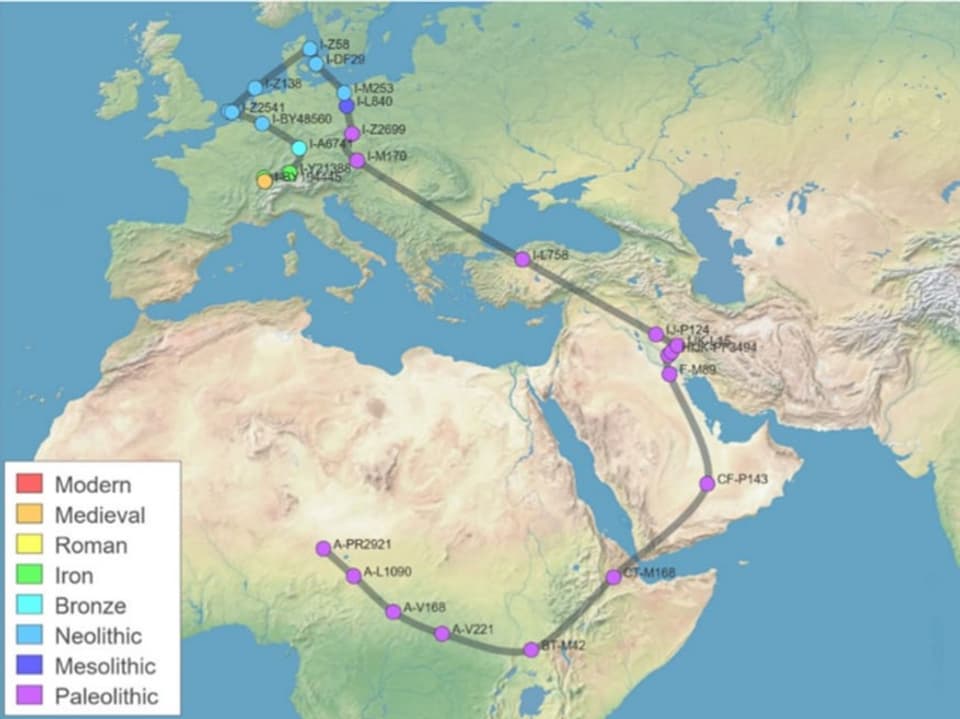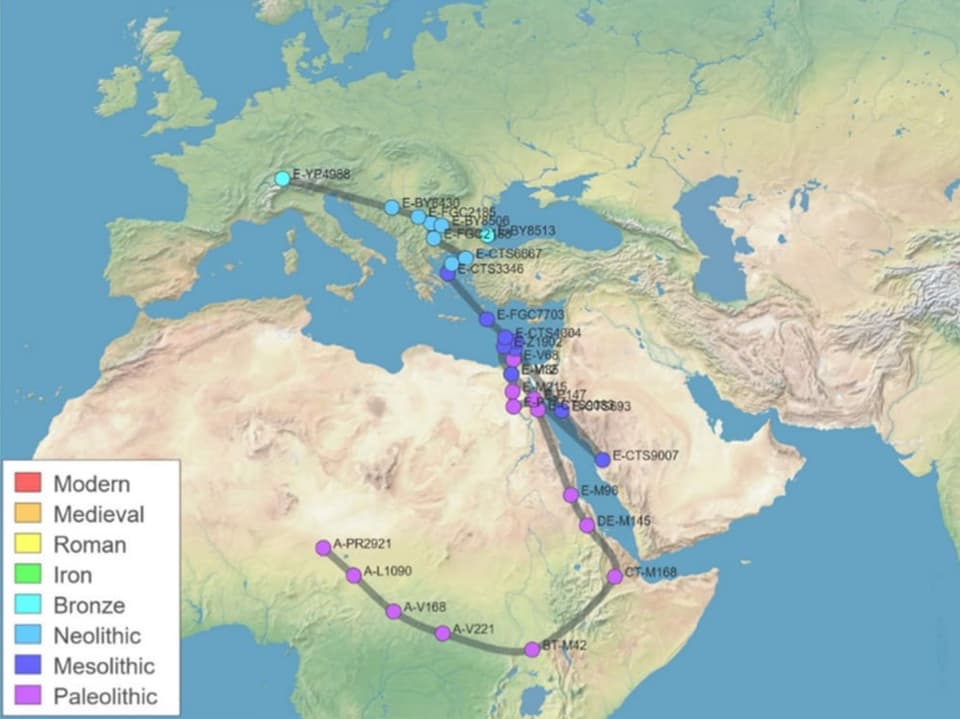Contents
Knowing one’s origins is a deeply human need. A research project is now embarking on a DNA journey in Valais.
It is probably one of humanity’s oldest questions: Where do I come from? A research project now wants to clarify this question, at least for men from Valais. For this purpose, DNA material is collected.
“Using DNA analysis, we can look much further back into family and migration history than is possible through conventional means,” explains Marie-Claude Creator from the Valais DNA Foundation, which launched the project. By “conventional paths” the historian means archival research. So go through archives; Browse old documents, church records or family trees for information.
Legend:
Mountains as obstacles: “Population movements were less intense in Valais than elsewhere,” says the historian. That is why the canton is well suited for genealogy research using DNA analysis.
Keystone/Cyril Zingaro
The project is unique in this form in Switzerland. Almost 400 people from Valais have already made their DNA available and had it analyzed in the USA. «Data protection is guaranteed. It is not possible to draw conclusions about individual people,” assures Marie-Claude Creator.
Men’s DNA in focus
Where do the long-established Valais families originally come from? Where did they settle in the meantime on their long journey to Valais? The project aims to clarify these questions. To do this, the Valais people’s DNA is compared with other data, for example with DNA traces that archaeologists have found.

Legend:
Instead of rummaging through archives, the DNA of Valaisians is now being compared.
Keystone/GAETAN BALLY
But why is only men’s DNA collected? This is due to biology, explains Marie-Claude Creator. “DNA analysis takes a closer look at the Y chromosome, and only men have that.” The Y chromosome is passed on from father to son. “The advantage is that it hardly changes over generations.” An analysis of the Y chromosome allows us to look far into the past.
Up to 100,000 years back
Marie-Claude Creator gives an example. “Here we have the results of a DNA analysis.” She points to her computer screen, which shows a world map with colored arrows. “They trace the path taken by the ancestors of a Valais family. Across Africa, via Saudi Arabia to Mongolia and then west to Central Europe.” The oldest traces can be found in Nigeria. They are around 100,000 years old.
“The more data we have, the more connections we can discover.” This way you can prove that two individuals have a common ancestor. “DNA analyzes have shown, for example, that the long-established Carlen and Biderbost families in Goms have a common ancestor with two Lower Valais families and with a family from Graubünden. The ancestor lived around the year 800.”
Marie-Claude Creator is convinced: “With our Valais research project we can show on a small scale what is also happening on a large scale. Families split off. Humanity has always moved through the world.”


